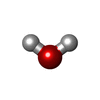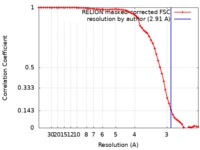登録情報 データベース : EMDB / ID : EMD-20277タイトル CRF1 Receptor Gs GPCR protein complex with CRF1 peptide. Post-processed map 複合体 : Complex of active-state Corticotropin-releasing hormone receptor 1 with heterotrimeric Gs protein.複合体 : Guanine nucleotide-binding protein G(s) subunit alpha isoforms short, Guanine nucleotide-binding protein G(I)/G(S)/G(T) subunit beta-1, Guanine nucleotide-binding protein G(I)/G(S)/G(O) subunit gamma-2, Corticotropin-releasing factor receptor 1タンパク質・ペプチド : Guanine nucleotide-binding protein G(s) subunit alpha isoforms shortタンパク質・ペプチド : Guanine nucleotide-binding protein G(I)/G(S)/G(T) subunit beta-1タンパク質・ペプチド : Guanine nucleotide-binding protein G(I)/G(S)/G(O) subunit gamma-2タンパク質・ペプチド : Corticotropin-releasing factor receptor 1複合体 : Nanobody 35複合体 : Corticoliberinタンパク質・ペプチド : Corticoliberinリガンド : water / 機能・相同性 分子機能 ドメイン・相同性 構成要素
/ / / / / / / / / / / / / / / / / / / / / / / / / / / / / / / / / / / / / / / / / / / / / / / / / / / / / / / / / / / / / / / / / / / / / / / / / / / / / / / / / / / / / / / / / / / / / / / / / / / / / / / / / / / / / / / / / / / / / / / / / / / / / / / / / / / / / / / / / / / / / / / / / / / / / / / / / / / / / / / / / / / / / / / 生物種 Homo sapiens (ヒト) / Lama glama (ラマ)手法 / / 解像度 : 2.91 Å Belousoff MJ / Liang YL 資金援助 Organization Grant number 国 National Health and Medical Research Council (Australia) 1120919 National Health and Medical Research Council (Australia) 1159006 National Health and Medical Research Council (Australia) 1150083 Japan Society for the Promotion of Science KAKENHI #18H06043 Japan Science and Technology PRESTO #18069571
ジャーナル : Mol Cell / 年 : 2020タイトル : Toward a Structural Understanding of Class B GPCR Peptide Binding and Activation.著者: Yi-Lynn Liang / Matthew J Belousoff / Peishen Zhao / Cassandra Koole / Madeleine M Fletcher / Tin T Truong / Villy Julita / George Christopoulos / H Eric Xu / Yan Zhang / Maryam Khoshouei / ... 著者 : Yi-Lynn Liang / Matthew J Belousoff / Peishen Zhao / Cassandra Koole / Madeleine M Fletcher / Tin T Truong / Villy Julita / George Christopoulos / H Eric Xu / Yan Zhang / Maryam Khoshouei / Arthur Christopoulos / Radostin Danev / Patrick M Sexton / Denise Wootten / 要旨 : Class B G protein-coupled receptors (GPCRs) are important therapeutic targets for major diseases. Here, we present structures of peptide and Gs-bound pituitary adenylate cyclase-activating peptide, ... Class B G protein-coupled receptors (GPCRs) are important therapeutic targets for major diseases. Here, we present structures of peptide and Gs-bound pituitary adenylate cyclase-activating peptide, PAC1 receptor, and corticotropin-releasing factor (CRF), (CRF1) receptor. Together with recently solved structures, these provide coverage of the major class B GPCR subfamilies. Diverse orientations of the extracellular domain to the receptor core in different receptors are at least partially dependent on evolutionary conservation in the structure and nature of peptide interactions. Differences in peptide interactions to the receptor core also influence the interlinked TM2-TM1-TM6/ECL3/TM7 domain, and this is likely important in their diverse signaling. However, common conformational reorganization of ECL2, linked to reorganization of ICL2, modulates G protein contacts. Comparison between receptors reveals ICL2 as a key domain forming dynamic G protein interactions in a receptor- and ligand-specific manner. This work advances our understanding of class B GPCR activation and Gs coupling. 履歴 登録 2019年6月10日 - ヘッダ(付随情報) 公開 2019年8月21日 - マップ公開 2020年2月5日 - 更新 2025年6月4日 - 現状 2025年6月4日 処理サイト : RCSB / 状態 : 公開
すべて表示 表示を減らす
 データを開く
データを開く 基本情報
基本情報 マップデータ
マップデータ 試料
試料 キーワード
キーワード 機能・相同性情報
機能・相同性情報 Homo sapiens (ヒト) /
Homo sapiens (ヒト) / 
 データ登録者
データ登録者 オーストラリア,
オーストラリア,  日本, 5件
日本, 5件  引用
引用 ジャーナル: Mol Cell / 年: 2020
ジャーナル: Mol Cell / 年: 2020




 構造の表示
構造の表示 ムービービューア
ムービービューア SurfView
SurfView Molmil
Molmil Jmol/JSmol
Jmol/JSmol ダウンロードとリンク
ダウンロードとリンク emd_20277.map.gz
emd_20277.map.gz EMDBマップデータ形式
EMDBマップデータ形式 emd-20277-v30.xml
emd-20277-v30.xml emd-20277.xml
emd-20277.xml EMDBヘッダ
EMDBヘッダ emd_20277_fsc.xml
emd_20277_fsc.xml FSCデータファイル
FSCデータファイル emd_20277.png
emd_20277.png emd_20277_msk_1.map
emd_20277_msk_1.map マスクマップ
マスクマップ emd-20277.cif.gz
emd-20277.cif.gz emd_20277_additional.map.gz
emd_20277_additional.map.gz emd_20277_half_map_1.map.gz
emd_20277_half_map_1.map.gz emd_20277_half_map_2.map.gz
emd_20277_half_map_2.map.gz http://ftp.pdbj.org/pub/emdb/structures/EMD-20277
http://ftp.pdbj.org/pub/emdb/structures/EMD-20277 ftp://ftp.pdbj.org/pub/emdb/structures/EMD-20277
ftp://ftp.pdbj.org/pub/emdb/structures/EMD-20277 emd_20277_validation.pdf.gz
emd_20277_validation.pdf.gz EMDB検証レポート
EMDB検証レポート emd_20277_full_validation.pdf.gz
emd_20277_full_validation.pdf.gz emd_20277_validation.xml.gz
emd_20277_validation.xml.gz emd_20277_validation.cif.gz
emd_20277_validation.cif.gz https://ftp.pdbj.org/pub/emdb/validation_reports/EMD-20277
https://ftp.pdbj.org/pub/emdb/validation_reports/EMD-20277 ftp://ftp.pdbj.org/pub/emdb/validation_reports/EMD-20277
ftp://ftp.pdbj.org/pub/emdb/validation_reports/EMD-20277


 EMPIAR-10361 (タイトル: Cryo-EM of CRF1 receptor bound to CRF and Gs protein
EMPIAR-10361 (タイトル: Cryo-EM of CRF1 receptor bound to CRF and Gs protein リンク
リンク EMDB (EBI/PDBe) /
EMDB (EBI/PDBe) /  EMDataResource
EMDataResource マップ
マップ ダウンロード / ファイル: emd_20277.map.gz / 形式: CCP4 / 大きさ: 20.8 MB / タイプ: IMAGE STORED AS FLOATING POINT NUMBER (4 BYTES)
ダウンロード / ファイル: emd_20277.map.gz / 形式: CCP4 / 大きさ: 20.8 MB / タイプ: IMAGE STORED AS FLOATING POINT NUMBER (4 BYTES) emd_20277_msk_1.map
emd_20277_msk_1.map 試料の構成要素
試料の構成要素 解析
解析 試料調製
試料調製 電子顕微鏡法
電子顕微鏡法 FIELD EMISSION GUN
FIELD EMISSION GUN
 ムービー
ムービー コントローラー
コントローラー



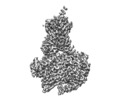


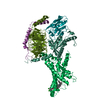



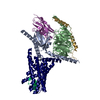
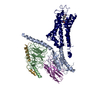
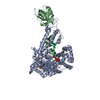
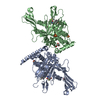


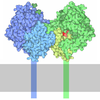

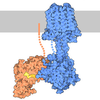


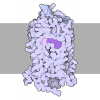




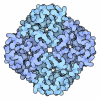
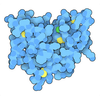





 Z (Sec.)
Z (Sec.) Y (Row.)
Y (Row.) X (Col.)
X (Col.)








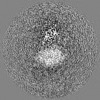

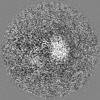


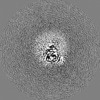
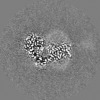


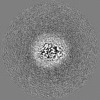


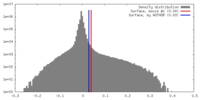
































 Trichoplusia ni (イラクサキンウワバ)
Trichoplusia ni (イラクサキンウワバ)
